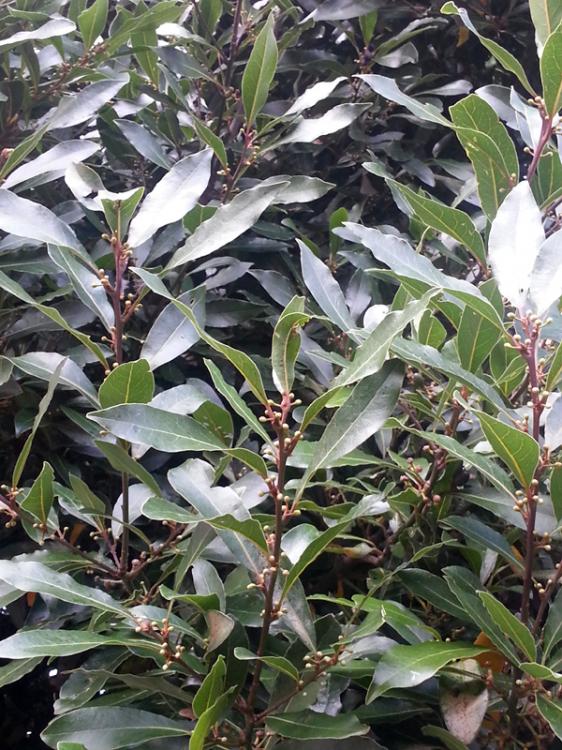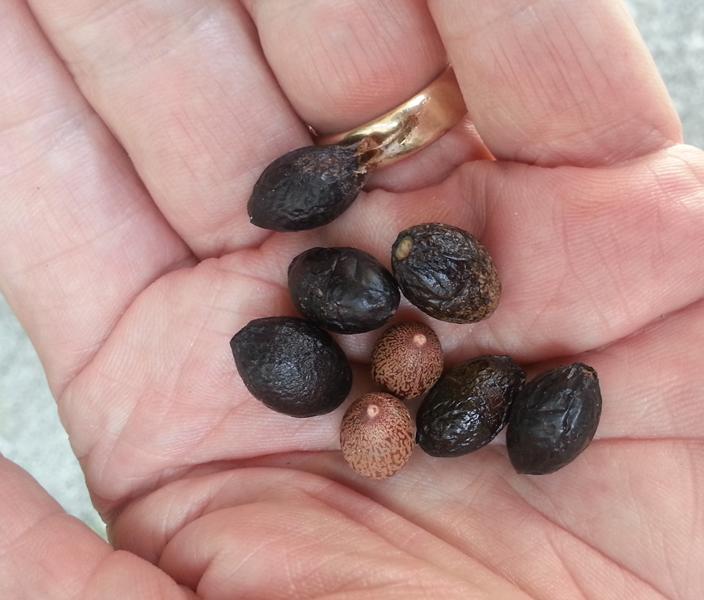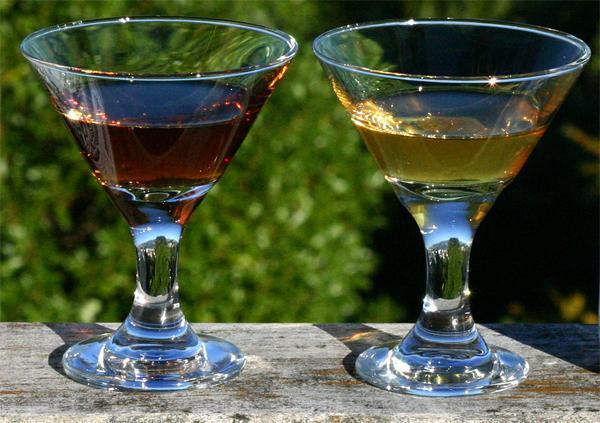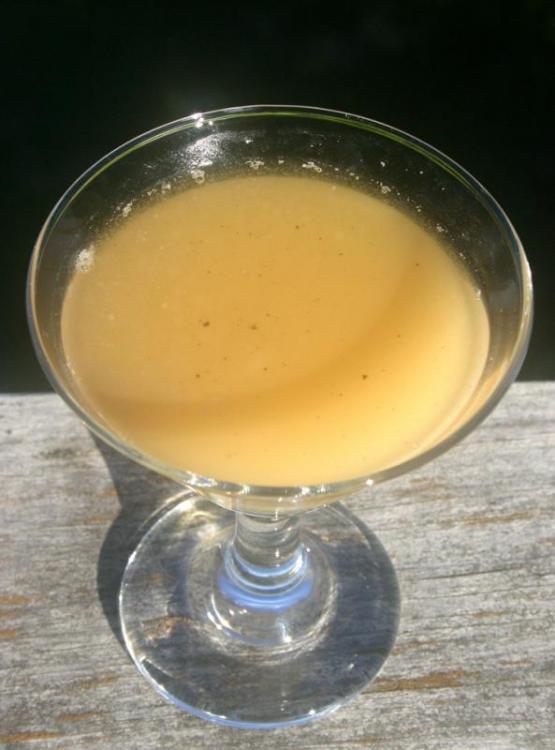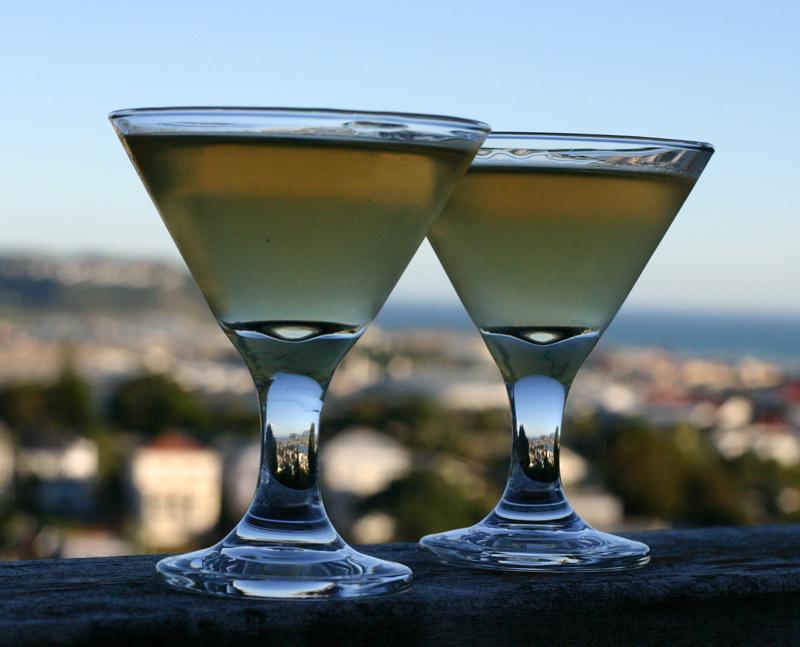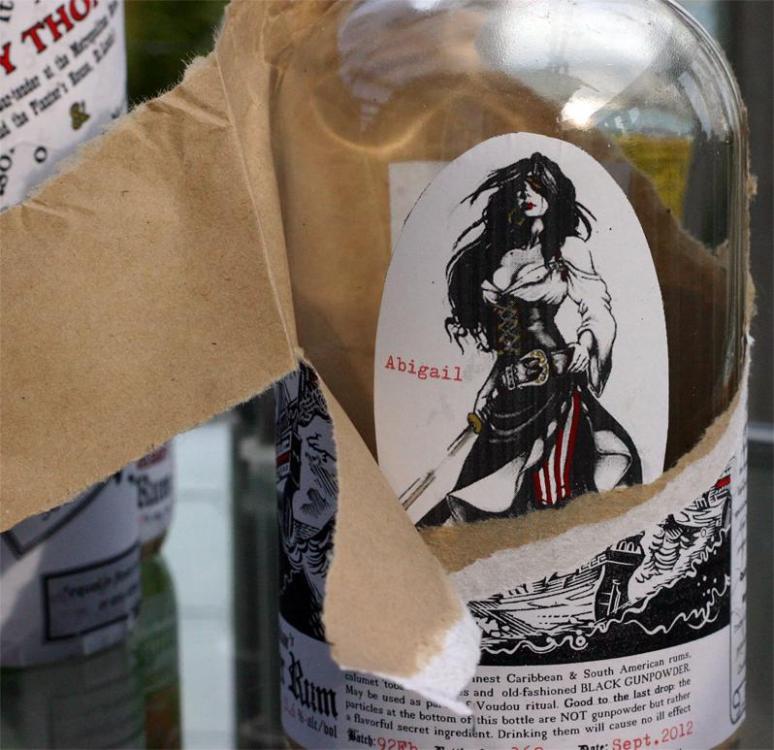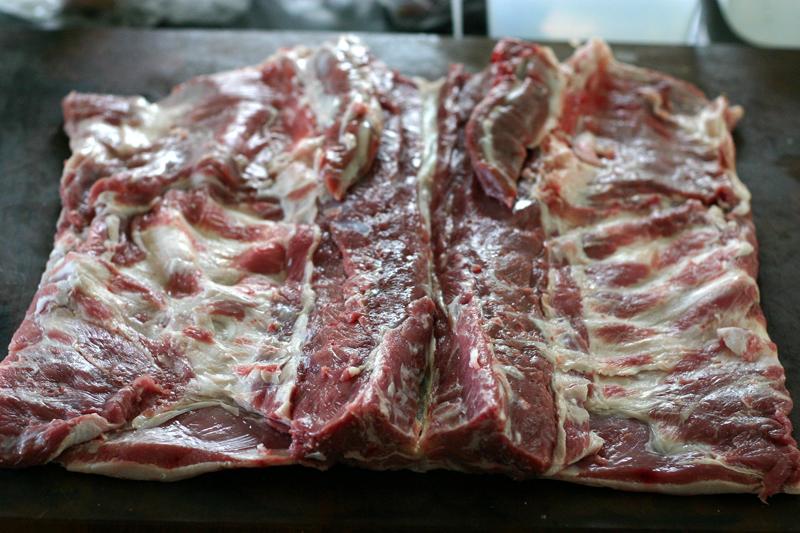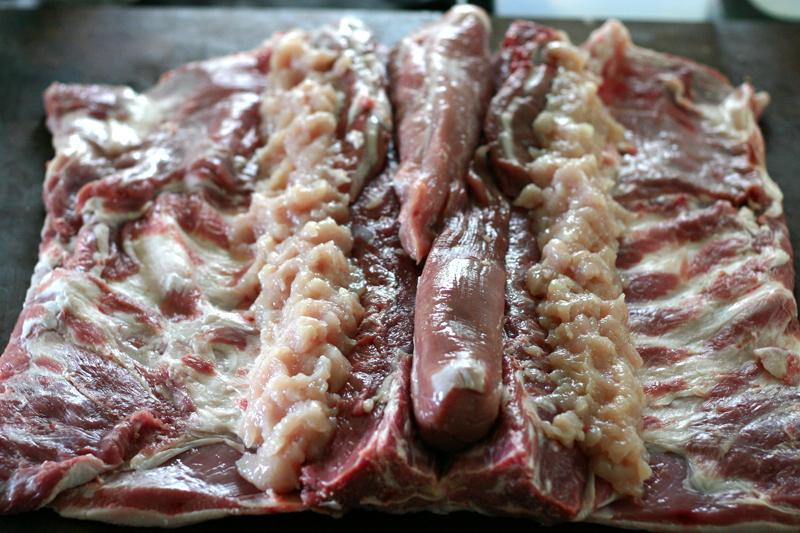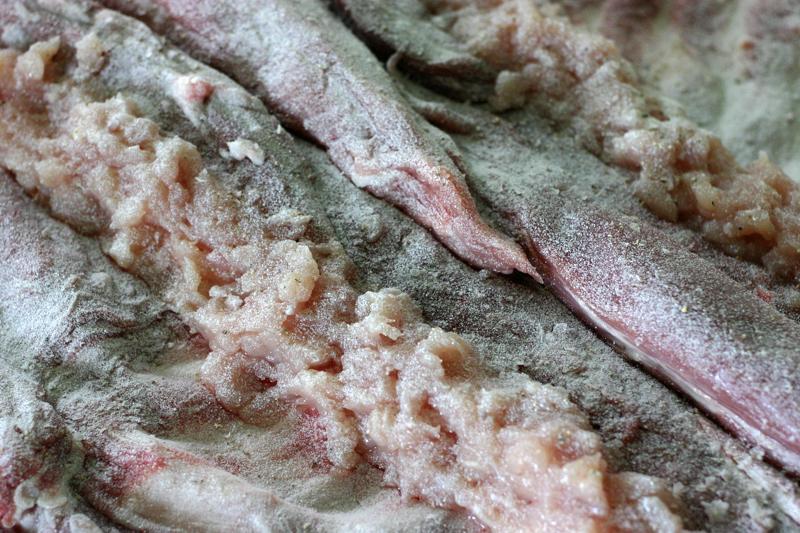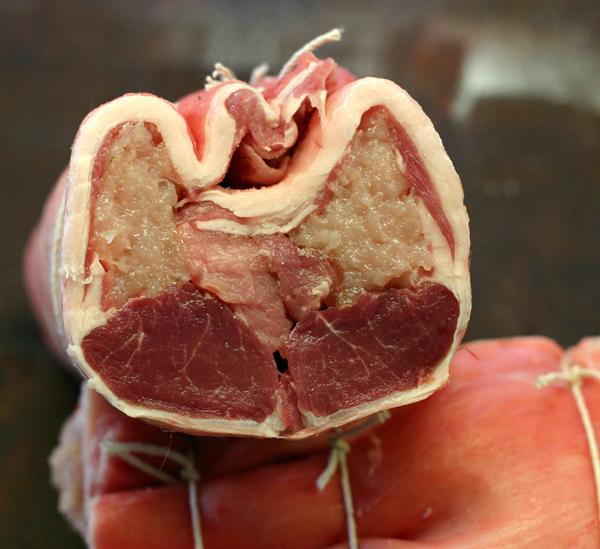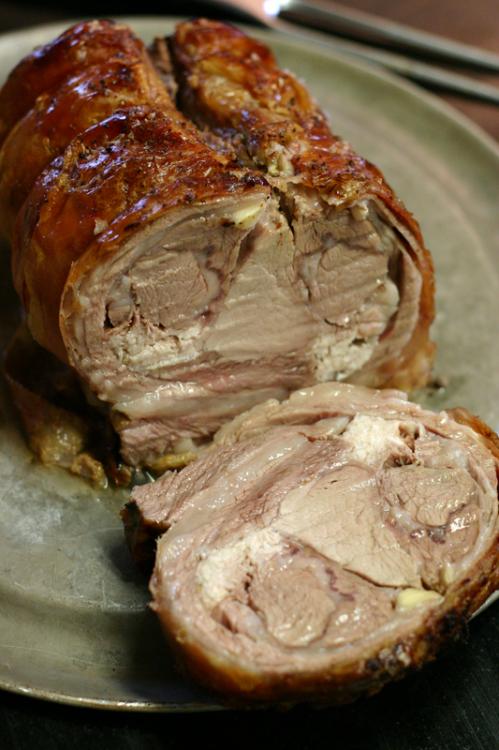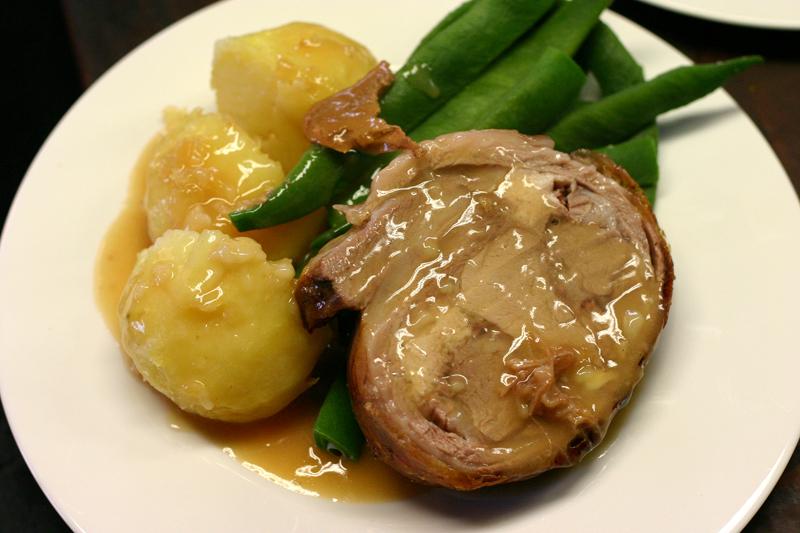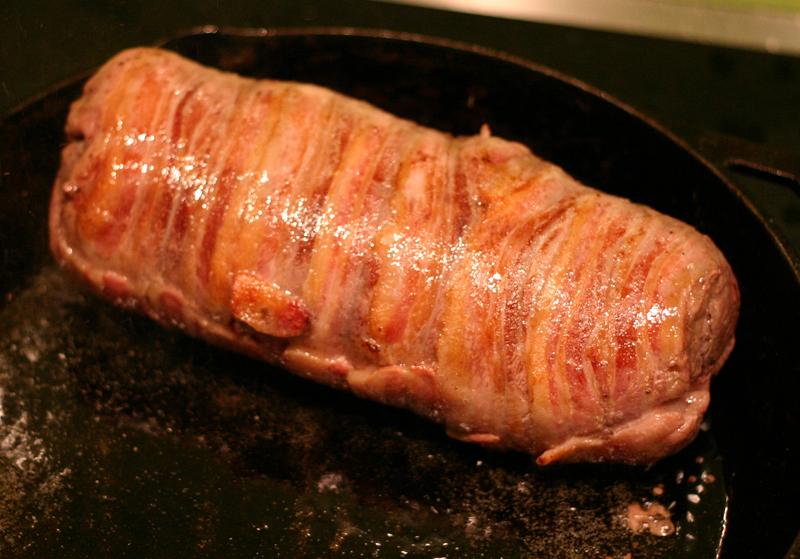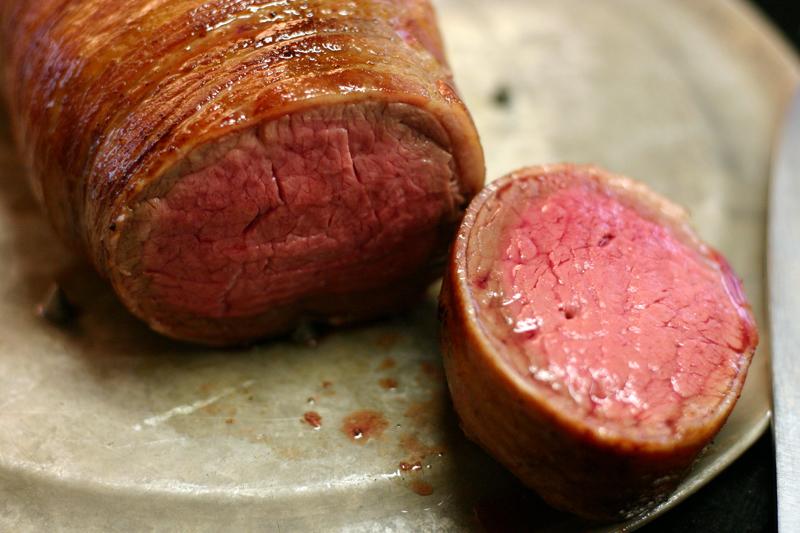-
Posts
1,664 -
Joined
-
Last visited
Content Type
Profiles
Forums
Store
Help Articles
Everything posted by lesliec
-
Hi Elsie. Your timing is perfect - as it happens, I prepared some cheeks just yesterday, to be cooked SV at some future time. I must credit Nickrey for the time/temp I like to use: 30 hours at 70°C. You'll end up with melting chunks of delicious meat, nothing like the vile-looking tough stuff you started with! My preferred prep method is to start reducing a mix of red wine and beef stock (say two-thirds wine; the total starting volume is largely up to you and will partly depend on whether you have a chamber sealer. I haven't, so I can't handle too much liquid; I suppose I start with about a cup in total). While it's simmering, finely chop an onion, a celery stick and a carrot (or whatever other mix takes your fancy). Sweat the veges in oil until soft, then toss in some herbs - yesterday I used a mix of rosemary, sage and thyme. Cut the cheeks into chunks - this is an optional step; I've done them whole and they're also fine, but I seem to prefer chunks, like a normal stew - and brown them quickly in oil. Remove from the heat and mix in the vegetables, salt & pepper and the reduced wine/stock mix. Once this has all cooled down you're ready to bag and cook or freeze. The above has worked very well for me many times. The resulting bag juice can be thickened to your liking with flour - in fact, I forgot to do it yesterday but you can mix some flour in with everything before you bag it to start the thickening process. The end product is great served plainly with some good mashed potatoes to soak up the juice, or wrap it in pastry for a fine New Zealand/Aussie-style meat pie. The nice thing about beef cheeks, at least here, is they haven't been 'discovered' yet, so they're still cheap - unlike lamb shanks have become. Let us know how you get on.
-
Blimey! I'm coming over ...
-
Sorry, Jo, should have been more specific - that's fresh leaves. I haven't tried dried ones but yes, I'd expect to have to use fewer. Let us know how your experiments turn out. Andrew, that maybe answers your question too. In general dried herbs will give more flavour than fresh. I just have so many fresh bay leaves available we don't bother with dried ones any more.
-
Thanks, guys (and/or gals). Here's a shot of one of the trees: The little lumpy things are (I presume) new flowers. The fruits are no more than about a centimetre long. Looking at some of the photos from Huiray's last link, the Californian fruits seem much bigger. The leaves on mine seem fairly smooth-edged at the moment, but the Californian ones look smoother and narrower. My memory is our leaves get a bit more wavy as they mature; we're not too long out of their annual growth spurt at the moment. We have two main trees either side of the house, one much bigger than the other. I learn from djyee100's last post that bays are male or female, so maybe that's part of the reason. Although they do self-sow like mad, so I'm inclined to think the smaller one is just younger. Anyway, it certainly seems I'm not going to poison anybody if I experiment. Thanks for your help. And I really recommend making bay ice cream. 10 or so leaves in 250ml each milk and cream with 150g sugar, bring to a simmer, remove from heat and allow to infuse for an hour or so. Bring back to a simmer, temper six egg yolks, keep stirring to about 90°C then sieve into another 250ml cream. Allow to cool, then refrigerate overnight before churning. Lovely stuff.
-
Well, the things one learns on eGullet - I had no idea before that there were such things as California bays. I'm pretty sure mine are the 'classical' bay (Laurus nobilis) but it's fascinating to learn about other kinds, however similar. The photo from the second link in djyee100's post suggests the California bay's fruits are a lot bigger than mine and, since the two species don't seem to be related, I think I should do some more research before trying mine as food. Thanks, peoples. Anybody else, feel free to chime in.
-
Bay trees grow wild where I live (I understand many were planted, along with oaks and a few other things, along property boundaries years ago in honour of soldiers returning from one or both World Wars, but they spread madly and now they're everywhere). I use their leaves a lot, in ice cream (very nice!) or infused oil, but at this time of year they're dropping their seeds all over the place: The two brown spotty ones lower left are the seeds after a few days; the others still have a thin layer of 'fruit' on them. There's so many of these things and they look so useful it occurred to me to wonder if anybody has heard of a culinary use for them (Google appears not to have, but then I didn't spend four hours looking). They have a subtle bay smell on their own; they look as though they'd grate like nutmeg. Has anybody ever seen them used, or heard of such a thing?
-
Just while we've strayed onto torches for a while - Cooking Issues (if you can get into it - it's been intermittent for me this morning) has an article on a gadget to put over the end of a blowtorch to slightly diffuse the intense heat. Good results, from the sound of it.
-

"Artisan Bread in Five Minutes a Day" Zoe Francois (2010–)
lesliec replied to a topic in Pastry & Baking
Hi Carole. Yep, we know about that one - it's over here. -
The charts don't even agree agree with each other - in one, a cup is 250ml; in another, four cups is 950ml (so one cup = 237.5ml. There's an original measure!). i'll stick with my scales, thanks!
-
Hi Hassouni. I haven't seen the videos, but are you talking about the recipe(s) discussed here? Possibly not, since you talk about water going in after the dry ingredients; the 5 Minutes a Day one adds dry to wet. But anyway ... maybe there's some TV magic involved. When I make it (which is frequently) it certainly needs more than a casual flick. Give it a good turning-over with a tablespoon or other implement of choice, but there's no need to be obsessive about making sure every last speck of flour gets mixed in - the wetness of the recipe will take care of that as it sits waiting for you to use it.
-
Good writeup here. Sounds like you may have a keeper ... Edited - fixed link.
-
Thanks for your reports, MaLO. We went to Arzak a couple of years ago and very much enjoyed it, but it's great to see others in the area we'd probably enjoy just as much. Alameda looks really good. Their presentation is beautiful - very similar to what you'd expect at Arzak. We liked the feel of San Sebastian itself and would like to spend more time there. We'd hoped to stay in the Hondarribia parador that time but it was full, unfortunately.
-
We had very freshly-killed Sika deer liver a couple of years ago. I think we very simply seared it in butter with a sprinkle of salt and pepper, maybe with a little fresh sage added. I do remember it was great; very different texture to lamb or calf liver. DON'T overcook it!
-
Thanks, Anna and Ozcook. Urbane's website looks fantastic. Esquire's other restaurant esq looks promising too.
-
This thread's been a bit quiet for the last five years so I thought maybe it was time for an update ... We're off to Brizzy for a week or so in early August. Prefer European; like modernist, like degustation, don't insist on either. What's good these days?
-
By popular demand (thanks, Tanstaafl2), here's what's inside the bottles. Rum on the left, but you could probably figure that out: It's not easy to see the characteristic black flecks in the rum by itself, so I floated some on top of some of my lovely home-made orgeat: And I may say in passing - rum and orgeat's a pretty decent drink, too (well, I could hardly separate them and pour them back into their bottles, now could I?). I'm not convinced by the Pegu Club experiment. It was a New Zealand-heavy mix - Lighthouse Gin, Smoke & Oakum English Curaçao plus lime juice, Angostura and orange bitters. We felt the lime was too dominant to start with, so I added a little more Curaçao. It still wasn't right, but a barspoon of sugar syrup helped. Far from the worst thing we've had, but not in the top 10. I might try again with 'real' lime juice rather than the stuff out of a bottle, but I think it's still going to be too tart for our tastes. Pretty, though (the sun had passed behind Mount Victoria by this stage): Just for interest, here's one of the first things we learned to make with Gunpowder Rum. It's very simple, but the other ingredients will give you an idea how robust the rum is. I'm not even sure if the drink has a name. Simply mix equal parts Gunpowder Rum, a robust red wine and Campari. Stir and pour over ice into a rocks glass. Sit down before drinking.
-
Abigail, poor girl, was almost exhausted - that was my old bottle! Good point about showing you what the products look like. I'll see what I can do tonight. I was planning to try a Pegu Club with the Curaçao, so that's a good opportunity for more photos.
-
Drink like a pirate, yo ho Back a couple of years, when I was doing my week as an eGullet food blogger, I caused some expressions of envy when I wrote about 'my local gin distiller'. Well I'm sorry, Chris Amirault - I'm going to do it to you again. There's a man in Wellington who makes some very special rum. This is Ben Simpson, who, for the past five years or so, has been the brains, brawn and everything else behind the Smoke & Oakum Manufactory. He makes just three products - Gunpowder Rum in 'normal' and cherry variants, and English Curaçao to 'Professor' Jerry Thomas's recipe from the 1860s: Ben's intention with Gunpowder Rum was to recreate the style of rum drunk 300-odd years ago by pirates, smugglers, sailors and voodoo practitioners. With ingredients like calumet tobacco, chillies and - yes - gunpowder, it's a rich, dark, hot brew. This is not a rum for civilised sipping; it's also not something you can ignore in a cocktail - if it's in there, you'll know it! But that's not to say it's some gut-rotting equivalent of bathtub gin. Far from it; treated with a bit of subtlety it's a delicious, characterful addition or substitute in many standard rum-based cocktails. My favourite is one I wrote about in eG's Mai Tai topic recently, where after mixing white and golden rum, Ben's Curaçao, orgeat and falernum I float some Gunpowder Rum on top. Amazing - and the little black flecks (Ben says they're a secret flavouring ingredient, intended to look like gunpowder) don't hurt at all. The gunpowder? Yes, the rum contains potassium nitrate, sulphur and charcoal, just the sort of stuff I used to use in my pyrotechnic experiments as a schoolboy (sorry, Mum). There's a long history of 'culinary' uses of gunpowder; Navy gunners commonly tasted their powder to check its quality, and Blackbeard was said to have drunk rum and gunpowder before boarding his victims. The concept of 'proof' in spirits comes from the practice of mixing rum and gunpowder and applying a match; if the mixture failed to ignite it was 'under proof'. 'Proved' rum was deemed to be at or above 'Navy strength' - now around 54.5% alcohol by volume. I was interested that Ben doesn't make Gunpowder Rum to this strength, though; he feels it starts to lose some balance as the alcoholic heat rises, so he usually settles for somewhere around 50-52%. And his painstakingly hand-done packaging is intended to evoke ammunition charges for muzzle-loading weapons: It's a challenge to get into, but as a reward each bottle hides a saucy pinup to contemplate on your next long sea voyage: The rum itself is a blend from several Carribean regions. Ben buys his bulk supply through a company in the Netherlands, E & A Scheer, who have been in the trade since 1712, originally as ship owners bringing rum back to Europe from the Americas and (slightly) more recently as specialist rum shippers and blenders. Ben tells them the styles he's looking for, it arrives in big plastic containers and Ben puts it all together in a borrowed warehouse in Petone, on the other side of the harbour from Wellington. There's some real local input as well; just off the main street of Petone there's a source of clean, fresh artesian water which Ben uses in his blends. Other local ingredients include organic Northland chillies and, in the cherry rum, Otago cherries (the cherry is only available in 250ml bottles and one bartender I spoke to suggests it be used almost like bitters - just a sprinkle is enough to get the taste). His total output across the range - the two rums and the Curaçao - is only around 2000 litres. The Curaçao itself is a delightful product. Although it's made to Jerry Thomas's recipe (number 188 in his 1862 Bartender's Guide), Ben points out it's not as simple as just following the recipe. You have to think about, for isnstance, what type of sugar would Thomas have been using? Would he have made his syrup in the same way we do now? And exactly what is the 'genuine whiskey' he calls for? Whatever the original was like, Ben's version is lovely - a clear, light golden nectar with a fabulously orangey nose. In addition to the Mai Tai above, we've been using it in most drinks requiring some orange influence. A very simple one is Curaçao, white wine and lemonade in a tall glass with lots of ice. Delicious. So, you ask, where can I get some of this stuff? Well, realistically - you probably can't. Even in Wellington it's only available in a few outlets (notably Moore Wilson's or Regional Wines), although you may well see a bottle hiding on the shelves of some of the more interesting cocktail bars around the country. Ben sends a small supply over the Tasman to the International Beer Shop in Perth, who then dispatch it to clients all over Australia. And you may soon be able to get it in Singapore, but apart from the odd sample bottle individual bartenders elsewhere may have picked up, that's about it. Hey look, a reason other than hobbits to visit New Zealand! I'll close with a couple of other recipes to keep you in the mood. Here's one Ben made me himself a couple of weeks ago at one of the bars he works in: Gunpowder, Blood and Sand 30ml Gunpowder Rum 20ml red vermouth 15ml Cherry Heering 15ml blood orange juice Shake all together in an ice-filled shaker and strain into a chilled cocktail glass. Garnish with flamed orange zest. And this is one from Ben's own recipe sheet. I made it a few nights ago and it's fantastic: The Bay Rum Mojito 45ml Gunpowder Rum 30ml falernum syrup Half a lime 5 fresh bay leaves 1 long sprig of fresh rosemary 1 sprig of fresh mint Soda water Ground cinnamon Muddle lime, falernum and some soda water in a shaker or tall glass. Add the herbs and more soda and stir with the muddling stick - don't crush the herbs too much. Add the rum and crushed ice, stir again and strain into a rocks glass. Top up with soda, add a short sprig of rosemary as garnish and dust with cinnamon.
-
Kim, I'd almost given up (OK, honesty - I HAD given up!). Glad you made it in the end - keep 'em coming.
-
I'll go the other way to Michaela - I can't comment on Gaggenau, but go induction all the way. Our cooktop celebrated its second birthday just before Christmas and it hasn't missed a beat. It's got all the power and controllability I'd always expected but rarely got from gas and it's really easy to clean up any splashes. The only disavantage I can think of didn't apply to us, and may not apply to you - if your various pots and things already pass the fridge magnet test, you're ready to go without needing to replace anything (unless you want to, but that's a whole other topic).
-
"She did the whole thing late at night while watching the first season of Girls." And didn't make (m)any mistakes? Amazing!
-
I can now report on further experiments. Over here I wrapped a nice piece of fillet steak in bacon, held on with TG. I gave it a couple of hours sous vide (54°C, I think), then a good fright in very hot oil: On carving, the bacon had bonded very well. The meat itself was as good as I'd expect for a cut like that. I would have liked to get the bacon more crispy; the whole thing was essentially the same texture all through. Tasty, though, and saves fiddling about with string at any part of the process. My most recent glueing came about as a result of watching an episode of Heston's Feasts - the one where he 'creates' an animal out of bits of a boar, goose, lamb and chicken. The edible part of this was a saddle of lamb, stuffed with pork mince and a pre-cooked cylinder of chicken. A brief note to worried pedants (like me) who haven't yet got round to checking whether Heston's spelling and pronunciation of his animal - 'cockentrice' - was correct. Briefly - yes. The cockentrice (it has other spellings, but they're similar) was the combined pig/chicken the Tudors liked for their feasts. The thing you're thinking of (like me) is the cockatrice, an entirely different, and mythical, dragon/chicken combination with a bad reputation. But I digress. At one point in the process, Heston sprinkled some mysterious white powder over his assembled meats before rolling them up. Aha, I thought; I know what that stuff is. And so do you, or you wouldn't be reading this thread. So, thus inspired, I took myself to my favourite butcher and desired them to produce a saddle of lamb. It's not a cut you see commonly (at least I never had), and my man Fred hadn't prepared one for a few years, but he trundled off out the back and came back with something looking like this: Imagine two racks of lamb, still attached to the surrounding skin, fat, etc. Now remove the bones. That's what you end up with - a sheet of meat and fat, attached to the skin, and with two meaty strips running down either side of the middle. Mine was, I think, from a bigger/older animal than Heston's, but no matter. While waiting for the saddle to be prepared I noticed a tray of rather nice looking pork fillets and promptly changed the recipe. Mine would have solid pork down the middle and chicken mince as the third ingredient. Here it is, laid out: A good sprinkle of transglutaminase: And then roll it all up. For some reason - probably habit - I tied it with string, but it would make more sense just to use plastic kitchen wrap: Note the various components. I had to cut it in half; in its original state it was (a) too big for a FoodSaver bag and (b) more than I needed for a single meal. The following week I cooked one of the halves (the other half is still in the freezer). Nothing fancy - just a conventional oven at 160-170°C for two or three hours. Lovely browning was achieved, and the components are all still identifiable: And finally with spuds, beans from the garden and gravy: As with the turducken from my previous post, this worked really well. I'll go further: it was freakin' delicious. Next time I'd give the chicken mince some interesting seasoning - probably some fresh thyme would have been good, for instance - but as it was with just salt and pepper before I rolled it, it was just fine. Again, you could get much the same effect by cooking lamb, pork and chicken separately and serving them together, but transglutaminase just makes it so much more fun.
-
Here's a thing ... Is it common for orgeat to curdle once it's in a drink? Made another Mai Tai last night and it was quite noticeable. (This prompted memories of our early cocktail experiments, when one of our friends consumed a Brain Haemorrhage [baileys and peach schnapps with a drizzle of Grenadine, served in a shot glass. It's supposed to curdle and look revolting - think zombie brains!] and insisted on a second. Shortly afterwards he felt the need for some fresh air ...) It had no effect on the taste, but it looked a bit odd. Any suggestions? In other news, I've nearly finished my first batch of orgeat. Have to make another one. Sigh.
-
I possibly do prefer sweet (in my drinks as well ...), although our 'default' cocktail is a Negroni. But I guess that's more bitter than sour, so not really the right comparison. I made the Saturn last night (with half the lemon). It was still fairly sharp; I thought maybe the passionfruit was a little dominant. I didn't mind it, although it's not going into my top 10. Jane hated it and I had to have hers too. Such devotion.
-
Sounds good, FrogP. I might try that tonight (I likes me gin - we're exclusively using the wonderful locally-made Lighthouse, which includes some native herbs in its botanicals). I note you say it was tart. I'm finding most recipes seem to vastly overstate how much lemon juice a cocktail needs. Maybe lemons vary around the world, but if I use half - sometimes even less - what the recipe says, I find it more palatable. Has anybody found the same, or is it just me not really liking strong lemon tastes?


